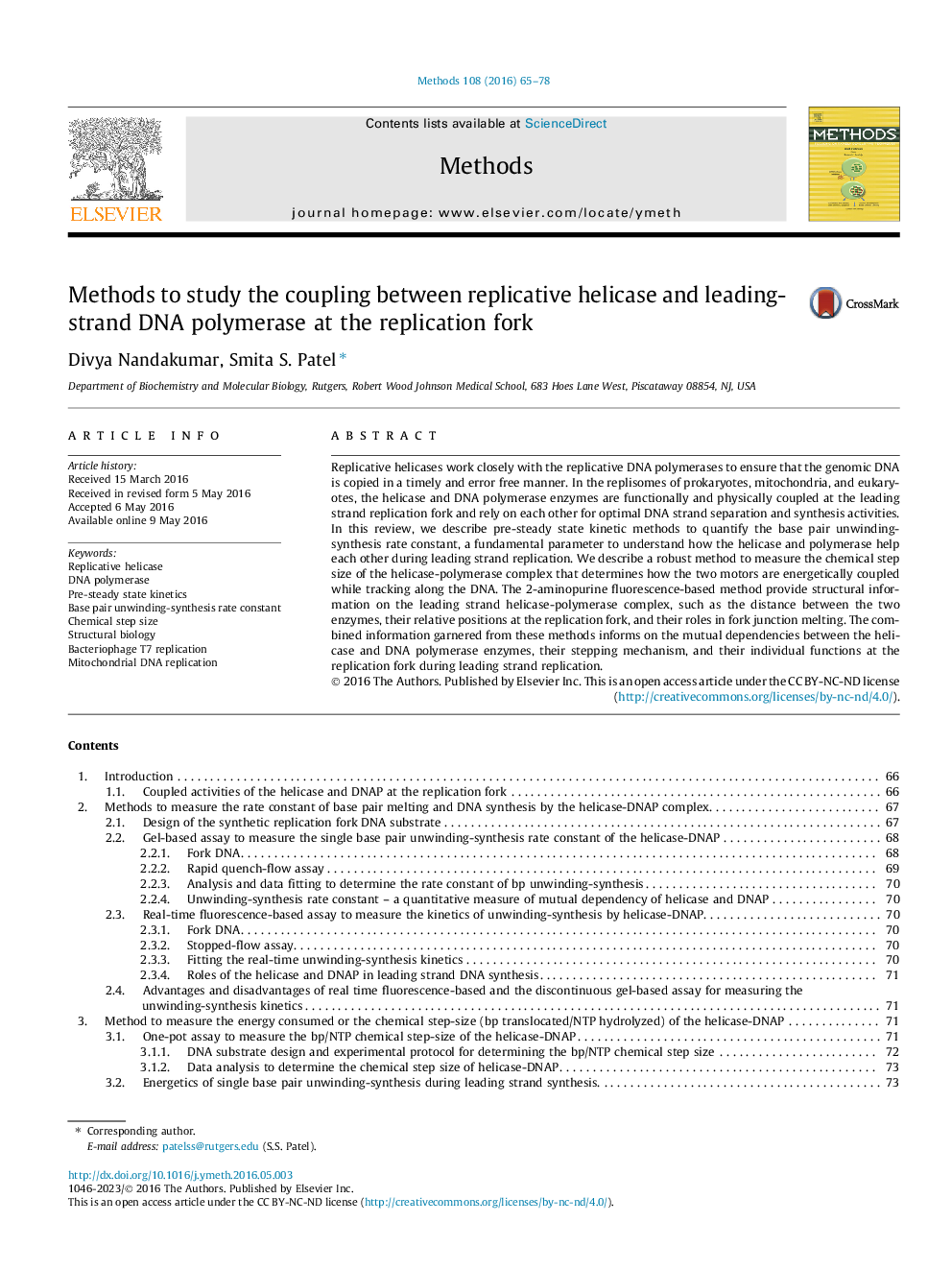| Article ID | Journal | Published Year | Pages | File Type |
|---|---|---|---|---|
| 5513619 | Methods | 2016 | 14 Pages |
â¢Methods to investigate functional coupling between helicase and leading strand DNAP.â¢Presteady state kinetic methods to measure single bp DNA synthesis rate constants.â¢Single pot assay to measure the energy consumption of helicase-DNAP complex.â¢Methods for positional analysis of helicase and DNAP at the replication fork.â¢Contributions of helicase and DNAP to fork junction base pair melting.
Replicative helicases work closely with the replicative DNA polymerases to ensure that the genomic DNA is copied in a timely and error free manner. In the replisomes of prokaryotes, mitochondria, and eukaryotes, the helicase and DNA polymerase enzymes are functionally and physically coupled at the leading strand replication fork and rely on each other for optimal DNA strand separation and synthesis activities. In this review, we describe pre-steady state kinetic methods to quantify the base pair unwinding-synthesis rate constant, a fundamental parameter to understand how the helicase and polymerase help each other during leading strand replication. We describe a robust method to measure the chemical step size of the helicase-polymerase complex that determines how the two motors are energetically coupled while tracking along the DNA. The 2-aminopurine fluorescence-based method provide structural information on the leading strand helicase-polymerase complex, such as the distance between the two enzymes, their relative positions at the replication fork, and their roles in fork junction melting. The combined information garnered from these methods informs on the mutual dependencies between the helicase and DNA polymerase enzymes, their stepping mechanism, and their individual functions at the replication fork during leading strand replication.
